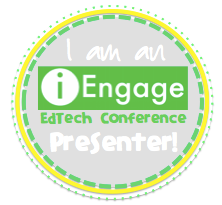Reflection, reflection, reflection. I have grown a great deal as a professional educator over the past 21 years, first as a classroom teacher and now as a Reading Specialist. I've taken risks, made mistakes, failed, as well as succeeded, through trial-and-error attempts within my instruction. After diving into the book, Who's Doing the Work? How to Say Less So Your Readers Can Do More by Burkins and Yaris last summer, I became better enlightened in effective practices for the next generation of guided reading instruction. That book truly altered my perception of what quality guided reading instruction should look like. I wrote a post dedicated to Who's Doing the Work?, so if you're interested in reading it, click HERE.
When I heard Burkins, the co-author of Who's Doing the Work?, had co-authored another book dedicated to guided reading, I quickly logged into Amazon and purchased Preventing Misguided Reading: New Strategies for Guided Reading Teachers. For this post, I simply want to highlight some of the authors' thoughts, but as you can see from the Table of Contents below, the book is jammed packed with worthwhile content. There are 6 chapters, each clarifying a misunderstanding about guided reading. The chapters are then broken down into 27 strategies that further support teachers with their guided reading practices.
When I first started teaching, Fountas and Pinnell were my foundation for teaching reading. Over the years, I've added to my professional reading shelf, but the *yellowing copy* of my first guided reading book still remains. Fountas and Pinnell introduced guided reading back in the 1990's, but somehow, what they intended for teachers has transformed into something quite different.
However, Burkins and Croft aim to clear up this unintended transformation and the confusion surrounding guided reading. This book helps empower teachers to refine their instruction and helps students become proficient readers. Below are quotes taken from their book.
- Education is littered with the remains of educational trends lost in translation. Often, the reality is that we compromise fidelity of their implementation (p.xv).
- In many cases, guided reading has become prescriptive and regimented, even though guided reading lessons should be responsive to the needs of particular groups of readers, because sound reading instruction is all about knowing how individual students interact with text (p.xvii).
- ...Fountas and Pinnell (1996) explain that 'the purpose of guided reading is to enable children to use and develop strategies "on the run" (p.xvii).'
- In terms of guided reading, we believe there is merit in adjusting some of our practices for the sake of preserving an instructional model that focuses on reading processes rather than discrete reading skills (p. xix).
- Educators tend to use the terms 'guided reading' and 'small-group reading' interchangeably. Small-group reading instruction, however, is often not guided reading. Small- group reading instruction may also be shared reading, word work practice, read-aloud, and so forth (p.xxi).
- Guided reading is not really about levels, benchmark texts, or offering the right prompts to students when they struggle with words. Rather, guided reading is, for us, about supporting students as they develop strategic approaches to meaning making (p.xxi).
- Students' processes will vary across texts, so a student may demonstrate a balanced reading process in one text and a print dependence in a more difficult text (p.7).
- Our destination is reading independence (p.11).
- ...if we teach students to let the text support them, we foster more independence in students. In order to do this, we can teach students to rely on the text rather than on the teacher for scaffolding (p.12).
- In the simplicity of the daily read-aloud resides a powerful tool that defines and depicts the role of the reader and the act of reading (p.13).
- We want students to understand from the very first day of shared reading that the act of reading is story driven, or, more simply, an act of discovering what the author is telling us (p.15).
- The direct teaching of skills and strategies should largely occur outside of guided reading (p.16).
- We believe that connecting instruction across modeled, shared, guided, and independent reading allows teachers to gradually shift to the students the responsibility for the literacy work (p.18).
- ...scaffolding has evolved into helping, which we sometimes offer through extensive and specific prompting. We can instead engage read-aloud, shared reading, guided reading, and independent reading to systematically scaffold students as they learn how to help themselves (p.27-28).
- Rethinking our guided reading structures within the gradual release of responsibility can give us more flexibility, more success, and less frustration (p.28).
- ...we find ourselves working for "wonders", or digging for "treasures", when students are in texts that are too difficult for them. Their success rests on our support, or our effort, rather than their independence (p.31).
- [Allington] further states that "many, many students are confronted daily by texts tat are too complex for optimal learning". In contrast, many educators believe that, in instructional-level texts, "the difficulty of the text and tasks needs to be beyond the level at which the student is already capable of independent functioning [Tyner] (.32)."
- If guided reading is beyond student skill levels, how then can they take these skills into independence? (p.32).
- Most important in terms of text selection, the guided reading book must be manageable for the readers (p.47).
- By giving students texts they can manage, we nurture and solidify their abilities to integrate and consolidate various sources of information efficiently and practice the smoothly operating system that is the bedrock of learning to read (p.47).
- The idea that readers move in precise ways through neatly defined stages and levels, and that they progress through these levels in systematic, chronological order, does not fit with what we have seen of beginning readers. In fact, Clay (1991) writes, "Fluctuations in performance, large leaps forward, movements backward in text difficulty to consolidate or recapitulate are movements to be expected under satisfactory conditions of instruction" (p.55).
- Again, learning to read is less about level and more about the reading process (p.65).
- We need to teach even our youngest students to think of reading as meaning making and to act on texts in sophisticated ways to access these meanings (p.70).
- The more you support students' understanding of cross-checking through modeled and shared contexts, the more you are likely to see students cross-check in guided reading (p.85).
- We find the power of learning to administer running records (and IRIs) invaluable to informing instructional decisions... (p104).
I hope you found the information in this post helpful. Thanks for stopping by and have a great weekend!
P.S. You can't go wrong when the author thanks you on Twitter for the post. See? This is why I love Jan Miller Burkins' so much. XO













































0 comments:
Post a Comment
I would love to hear from you, so please leave a comment. Come back for a visit sometime soon, too! :)